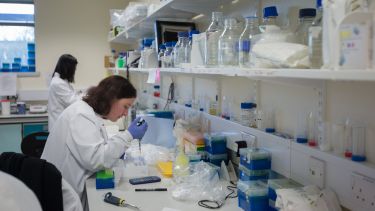SABRE: RTDF-UK In situ Source Area BioREmediation
SABRE is a £1.5M project funded by BBSRC through the LINK program, aimed at demonstrating that microorganisms can be stimulated to biodegrade contamination by carcinogenic chlorinated solvents such as tetrachloroethylene (PCE) and trichloroethylene (TCE).

Summary
These chemicals are called non-aqueous phase liquids (NAPLs) because they are immiscible in water and have a very low solubility in groundwater. Therefore, they can contaminate vast quantities of groundwater for decades or centuries.
Enhancing the rate of dissolution will hasten the removal of the NAPL, thereby shortening the time of adverse impact. Maximum dissolution will occur if the PCE/TCE concentration in groundwater in contact with the NAPL surface is near zero.
Certain microorganisms are capable of degrading PCE and TCE to non-toxic byproducts, even very high concentrations such as that found very near NAPLs.
Project aims
- Evaluate enhancement of NAPL removal due to stimulation of microbial degradation.
- Develop a strategy to assess treatment performance.
- Quantify errors in performance assessment to determine confidence level of success/failure.
- Develop a computer model to explore application to other sites.
Scientific approach
An organic substrate will be released upgradient of the NAPL source area and allowed to flow downgradient (constrained in alleys by impermeable walls).
The substrate will be selected on the basis of lab studies. A dense array of multilevel sample devices installed across the alley in two locations along the flowpath will provide mass flux estimates of PCE/TCE and breakdown products.
Increases in breakdown products will indicate microbial activity. Partitioning tracer tests will be conducted at various times to measure any changes in NAPL volume.
These estimates will be compared to data from an array of novel geophysical measuring devices. The status of the microbial community will be assessed at various times during the experiment. A control alley will provide comparison to natural attenuation processes.
A geostatistical emulator will be created to assess treatment performance.
Project partners
- University of Edinburgh
- British Geological Survey
- Environmental Simulations International
- Atkins Environmental Sustainable Solutions
- Remediation Technologies Development Forum
